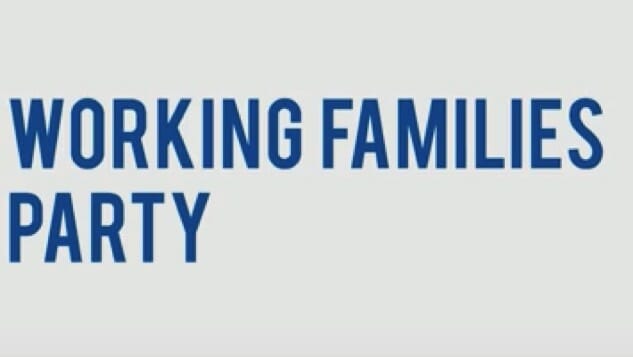Left of the Aisle: Could the Working Families Party Be the Sane Way Forward for Democrats?

In 2012, after suffering what the Republicans thought was an unbelievable second loss to Obama, the GOP did what they called a post-mortem. They looked back at the election, trying to figure out what they had done wrong, and came up with a few solutions that now seem quaint—basically, the opposite of what Trump has done in his first 100 days. Today, the Democrats are in a position to do some reflecting on their own after losing to the Big Bad.
Thomas Frank’s Listen, Liberal saw a Democratic Party abandoning the Working Families that made it up even before the election happened. Then there’s The Destruction of Hillary Clinton, an earnest but misguided defense of Hillary Clinton that handles its subject with white gloves. And Shattered, an exposé spelling out all the details of her earnest but misguided run for president. These latter two books represent the kind of infighting the Democrats have come to be known for over the last two years: should the party move left, or does Trump prove it needs to stay where it is? With the midterm elections looming in the background, this fight cannot stand to go on for much longer if the left hopes to regain some influence in the House and Senate. Fortunately, there is a solution waiting in the ranks.
The Working Families Party is a political organization with roots going back twenty years, and it is the most obvious way forward for the Democrats. They were formed at the end of the Clinton era as an antidote to centrism, a symptom of the triangulation the Clintons actively advocated for. Briefly, triangulation is the political theory that the path of least resistance is in the center. The right wants to keep minimum wage where it is, or abolish it, the Left wants $15, or a living wage, so the triangulation is a $12 minimum wage. The only problem for representatives of the left is that the center line—the Overton window in politispeak—keeps being pulled to the right. The Working Families Party wants to be the strong voice on the left to keep that center line where it is and maybe even eventually begin to pull it back from the grips of the Alt-Right, Tea Partiers, Neoliberals and centrist Democrats who have successfully shifted it to the point where President Trump is a reality.
Based in New York, many people in that state and Connecticut would be extremely familiar with the party. They have members in an array of offices from the city level on up through the governor and senators. Their endorsed candidates raised the minimum wage and Connecticut now has a part-time sick leave law due in major part to their Working Families politicians. In these two states, they got their start through a combination of endorsements and fusion voting, which puts candidates on the ballot twice. A representative like Rosa Delauro would appear as the Democratic candidate like on any other ballot, but on a separate line, usually below the two major parties, she would appear as a candidate for the Working Families Party. Both sets of votes go to her, and it’s an easy way to support a third party without throwing away a vote.
Senator Chris Murphy, who will be seeking re-election in 2018 told Paste that he’s “proud of the past support [he’s] earned from the Working Families Party, and [he looks] forward to continuing to work with Executive Director Lindsay Farrell…in Connecticut.” His work as Senator, including his filibuster on gun control and hardline stance against the Trumpist right-wing are why he was elected. “The Working Families Party has always been a strong voice for progressive values,” Murphy continued. “With Donald Trump launching an all out assault on working families, we need their voices now more than ever. In just his first few months in office, Trump has tried to undermine workers’ rights, eviscerate the safety net, reward polluters, roll back the clock on women’s rights, and fund a huge tax cut for drug companies and the wealthy by taking away health care from 24 million people. We are stronger in our resistance with the passion and the dedication of Working Families Party voters.”
-

-

-

-

-

-

-

-

-

-

-

-

-

-

-

-

-

-

-

-

-

-

-

-

-

-

-

-

-

-

-

-

-

-

-

-

-

-

-

-








































